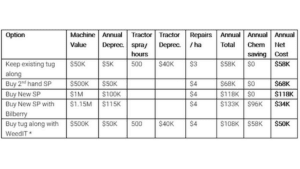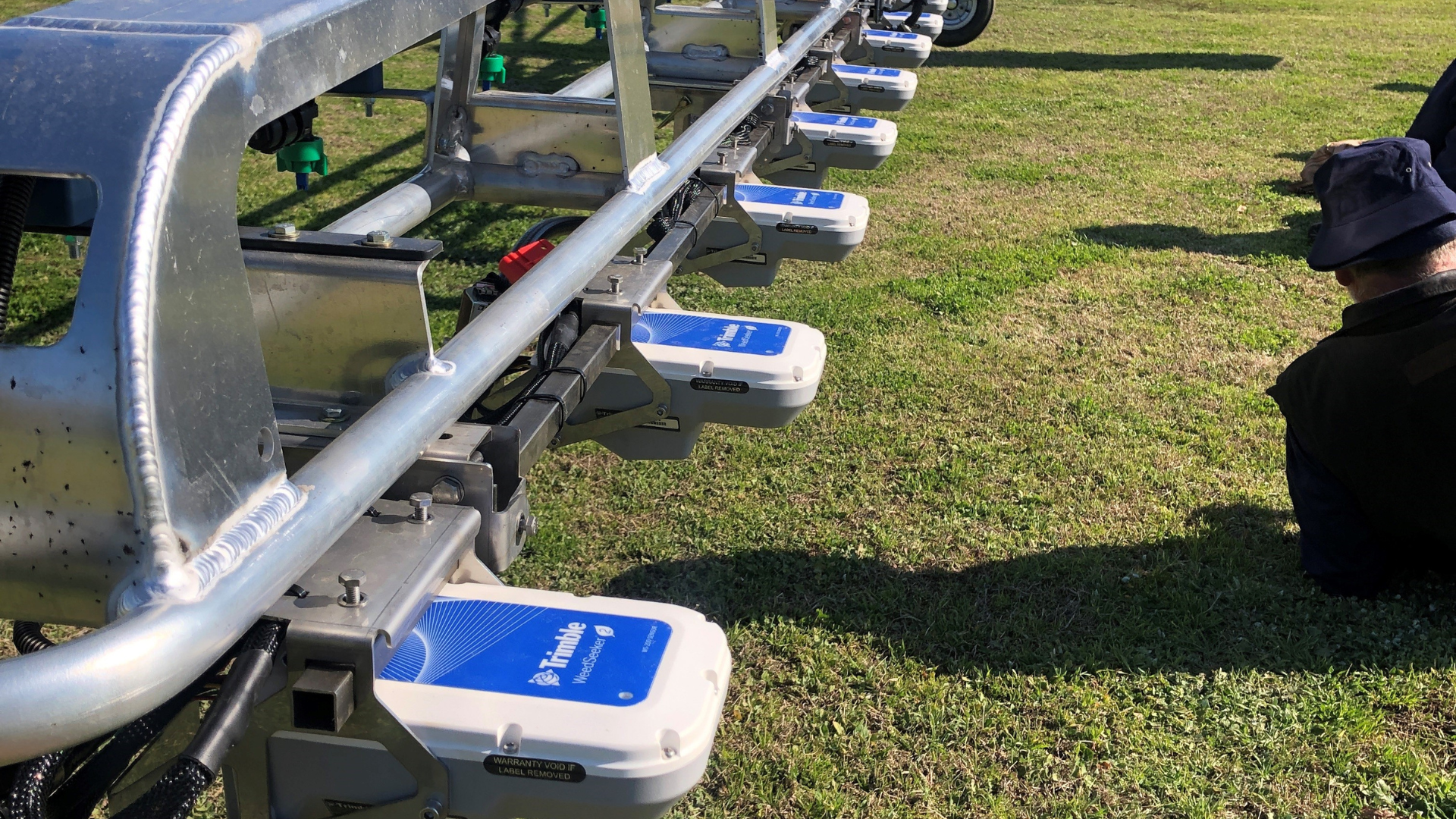Written by: Peter Newman | Farm Business Consultant | 0427 984 010
Machinery prices are totally bananas these days.
Will the price of new gear ever come down?
Of course, the dealers are saying no, this is it, get used to it.
High machinery prices are here to stay.
Don’t ask me how this happened. It seems that COVID and the semiconductor shortage caused supply issues with machinery, which pushed the prices up, and the companies are now enjoying producing less gear, and making record margins.
If you were in their shoes, why would you increase production and decrease your margin?
Remember the funny memes a couple of years back when John Deere announced that the new X9 harvester would cost $1.1M. Everyone thought it was joke. Somehow this actually seems reasonable now.
$1M for a SP boomspray is nuts!
What if someone told you that you should not only pay $1M for the boom, but you should also pay an extra $150K to have it fitted with weed detecting cameras, and then pay an algorithm fee every time you use those cameras?
Crazy!
Guess what, I’ve done some numbers, and for many growers, this will be the recommendation.
The growers that this will suit are spraying at least one pass on summer weeds across the farm every year on average.
Their broadleaf weed control in cereal crops is expensive. The weeds, particularly wild radish, has high levels of resistance, and while the numbers are low due to good management over many years, the last few radish are costing a fortune to control.
And, as a bonus, these growers are starting to worry about how much glyphosate resistant ryegrass they are seeing, and weed detection cameras will help to control the survivors with high rates of alternative knockdown herbicides.
For the analysis I used the average WA farm from the 2021 Planfarm Benchmarks. 4600 hectares. 3600 hectares of crop, 2400 of which are cereals. I priced a summer spray at $15/ha and have four levels of broadleaf weed control from a cheap, single spray of $10/ha to a high cost, two spray strategy at $45/ha just for the herbicides.
There are two main types of weed detecting cameras.
The bilberry system, designed by some young French fellas who recently sold the company to Trimble. The Bilberry system can both detect weeds in fallow situations (e.g. summer spraying) and also detect some green weeds in green crops. So far they have specialized in developing algorithms (algo’s to the millennials!) to detect and spray wild radish and other broadleaf weeds in cereals. And they now also have algos to detect and spray grass weeds in break crops such as canola and lupins. This is called green on green spraying.
The other is the Weedseeker or WeedIT products that can detect and spray green weeds in fallow situations. We call this green on brown spraying.
They all cost about $150K to fit to a 36m boom.
At the moment, the Bilberry system can only be fitted to new Miller Nitro, Agrifac or GoldAcres boomsprays. However, since buying the company, Trimble have said that in the future they would like to be able to fit to second hand boomsprays, but they will need the right PWM system.
Bilberry charge an algorithm fee of $2.50/ha for green on brown, summer spraying, and $8/ha for green on green spraying (e.g. radish in wheat). In both cases you can spray the same hectare multiple times for no extra cost.
These systems can save around 90% of herbicide cost for both summer spraying and green on green, in crop spraying. For my analysis I used 85%, and I depreciated everything at 10% per year. In reality, SP boomsprays probably depreciate at higher rates than this, perhaps 15%, but I don’t have hard data on this so I have decided to stick with our stock standard 10%. I also included $2 to $4/ha for repairs, depending on the boomspray.
Chemical saving for the average WA farm
Spraying the entire 4600ha farm with a summer spray costs $69K. If you save 85% of this, that’s a saving of $58K. If using the Bilberry system, the algo fee is $11,500, so that’s a net saving of $47K per year.
If your wild radish is quite hard to kill, I have estimated that you are spraying one third with $21/ha, one third with $35/ ha and one third with $45/ha of herbicide. This totals $80K.
If you reduce your chemical usage by 85%, that’s a saving of $68K, which equates to a saving of $49K after the algo fee has been deducted.
For this average farm, the chemical savings with a Weedseeker or WeedIT system are about $58K, and for a Bilberry system, the savings are $96K per year.
The verdict
The table below summarises the final verdict. As capital intensive as it is, for some growers the best option is a new SP boomspray with bilberry cameras. Clearly, if Trimble make it possible to fit their cameras to second hand boomsprays, this will be the winner winner chicken dinner.

(*) the tug along boom with WeedIT cameras that I refer to here is a Sonic boom with a 7000 and 3000L tank that can bulk spray and camera spray at the same time.
Who is it for?
If summer weeds are generally a problem, and your broadleaf spray in cereals is expensive over a low density of weeds, the new boom with a bilberry system wins.
In this scenario, the worst thing you can do is simply buy a new SP boomspray and continue to bulk spray everything.
Who is this not for?
Growers who are getting good control with a low cost, say $10/ha, broadleaf spray in cereals, will not benefit from the bilberry system due to the algorithm fee. Also, growers who either rarely need to spray for summer weeds will not benefit, but having said that, I’m yet to find a region where this is the case. On the other hand, growers who get so much summer rain that they are often faced with a blanket of weeds, summer weeds can be so thick that camera spraying may not work.
Robots?
The robot sprayers such as swarm farm are coming. There are now several in WA and dozens around the country. My initial numbers on these look very encouraging, but I do need a little more information to make an accurate assessment. The possibility of a robot taking itself spraying and targeting just the weeds in the crop is super exciting.
Summary
Yes, everything is expensive, including weed detecting cameras and algorithms, but it seems that for some growers they will be worthwhile despite the cost. Our Planfarm consultants have the spreadsheet that I used to make these calculations, so if you’re considering going down this path, give one of our consultants a call to run your numbers and see if it is worth you while.


